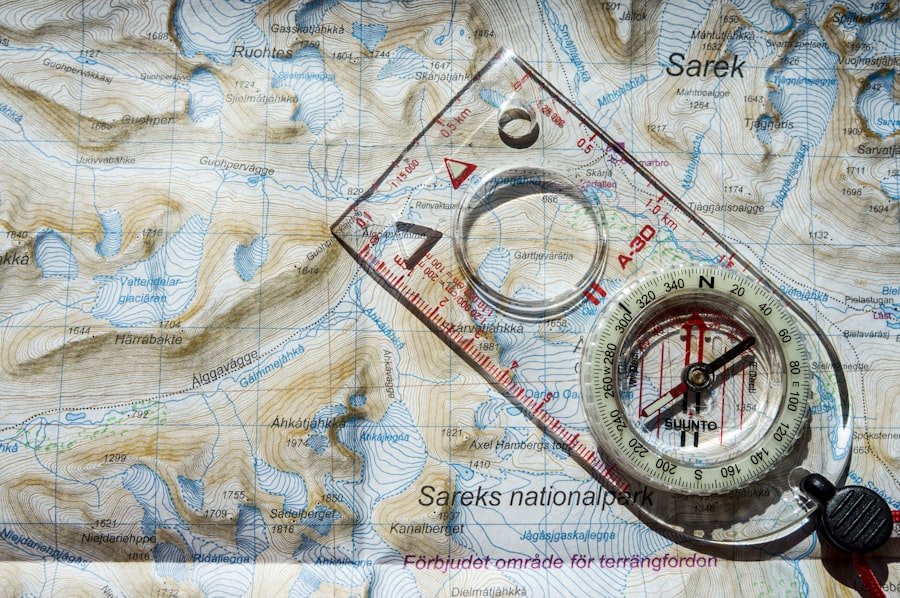In an increasingly interconnected world, location sharing has emerged as a vital feature that enhances communication and connectivity among individuals. The ability to share one’s location in real-time has transformed how we navigate our daily lives, whether it’s coordinating meet-ups with friends, ensuring the safety of loved ones, or simply keeping track of family members. This technology is not just a convenience; it has become an integral part of how we interact with one another, especially in urban environments where distances can be deceptive and traffic can complicate travel plans.
Location sharing is facilitated through various devices and applications, allowing users to broadcast their whereabouts to selected contacts or the public. This capability is particularly useful in emergency situations, where knowing someone’s precise location can expedite assistance. Moreover, businesses have also harnessed location sharing to enhance customer engagement and improve service delivery.
For instance, ride-sharing services rely heavily on real-time location data to connect drivers with passengers efficiently. As we delve deeper into the mechanics of location sharing, it becomes evident that understanding how to utilize these features effectively can significantly enhance both personal safety and social interaction.
Key Takeaways
- Location sharing allows users to share their real-time location with friends and family for various purposes such as safety, convenience, and socializing.
- Setting up location services on iPhone is easy and can be done through the device’s settings, allowing users to control which apps have access to their location.
- When choosing a location sharing app, consider factors such as user interface, privacy settings, and compatibility with friends’ devices.
- Sharing location via messages or email is a convenient way to quickly send your location to someone without the need for an additional app.
- Social media apps also offer location sharing features, allowing users to share their whereabouts with a wider audience, but privacy settings should be carefully managed.
Setting up Location Services on iPhone
To begin sharing your location using an iPhone, the first step is to ensure that Location Services are enabled. This feature allows apps to access your device’s GPS data, which is crucial for accurate location sharing. To activate Location Services, navigate to the Settings app on your iPhone.
Once there, scroll down and select “Privacy,” then tap on “Location Services.” Here, you will find a toggle switch at the top of the screen; ensure it is turned on. This action grants apps permission to use your location data, which is essential for any location-sharing functionality. After enabling Location Services, you can customize which apps have access to your location.
This granularity allows you to maintain control over your privacy while still enjoying the benefits of location sharing. For instance, you might want to allow a navigation app full access while restricting a social media platform to only access your location when you are actively using the app. This setting can be adjusted by selecting individual apps listed under Location Services and choosing from options such as “Never,” “While Using the App,” or “Always.” By carefully managing these permissions, you can optimize your iPhone’s functionality while safeguarding your personal information.
Choosing a Location Sharing App

With numerous applications available for location sharing, selecting the right one can be daunting. The choice largely depends on your specific needs and the context in which you plan to share your location. Popular options include built-in features like Apple’s Find My app, which allows users to share their location with friends and family seamlessly.
This app not only facilitates location sharing but also provides additional features such as locating lost devices and creating geofences that alert you when someone enters or leaves a designated area. Alternatively, third-party applications like Google Maps and Life360 offer robust location-sharing capabilities with unique features tailored for different user scenarios. Google Maps allows users to share their real-time location with anyone who has a Google account, making it ideal for coordinating travel plans or meeting up in crowded places.
Life360, on the other hand, is designed specifically for families, providing a private network where members can share their locations and receive alerts when someone arrives or departs from a specified location. Evaluating these options based on usability, privacy settings, and additional features will help you choose the most suitable app for your needs.
Sharing Location via Messages or Email
| Platform | Number of Shares | Engagement Rate |
|---|---|---|
| Messages | 500 | 25% |
| 300 | 15% |
One of the simplest ways to share your location is through messaging platforms or email. On an iPhone, this can be done directly through the Messages app. To share your current location via Messages, open a conversation with the person you wish to share your location with.
Tap on the “i” icon in the upper right corner of the screen, then select “Share My Location.” You can choose to share your location for one hour, until the end of the day, or indefinitely. This feature is particularly useful when meeting friends or family in unfamiliar areas, as it allows them to navigate directly to you without any confusion. In addition to Messages, sharing your location via email is also straightforward.
Open your email application and compose a new message. You can include a link to your location by using Google Maps or Apple Maps. Simply search for your current location in either app, tap on the share icon, and select “Copy Link.” Paste this link into your email message.
Recipients can click on the link to view your exact location on their devices. This method is beneficial for more formal communications or when you want to provide detailed directions alongside your location.
Sharing Location via Social Media Apps
Social media platforms have integrated location-sharing features that allow users to broadcast their whereabouts to friends and followers. For instance, Facebook enables users to check in at specific locations, which not only shares their current position but also provides context about where they are and what they are doing. This feature can enhance social interactions by allowing friends to see where others are spending their time and potentially join them.
Instagram also offers location tagging in posts and stories, allowing users to share their experiences with a geographical context. When posting a photo or video, users can add a location tag that appears above their content. This not only informs followers of where the content was created but also helps others discover new places through geotagging.
However, while these features enhance social connectivity, users should be mindful of their privacy settings and consider who can see their posts before sharing their locations publicly.
Sharing Location via Third-Party Apps

Beyond built-in features and social media platforms, numerous third-party applications specialize in location sharing. Apps like Glympse allow users to share their real-time location temporarily with anyone via a simple link sent through text or email. Glympse does not require recipients to download an app; they can view the shared location in their web browser, making it accessible for everyone regardless of their device type.
Another noteworthy application is Find My Friends (now integrated into Apple’s Find My app), which enables users to create a network of trusted contacts who can see each other’s locations in real-time. This app is particularly popular among families and close friends who want to keep track of each other’s whereabouts for safety reasons. Users can set up notifications for when someone arrives at or leaves a specific location, providing peace of mind without constant check-ins.
Privacy and Security Considerations
While location sharing offers numerous benefits, it also raises significant privacy and security concerns that users must navigate carefully. One of the primary risks associated with sharing your location is the potential for unwanted attention or stalking. When you share your real-time whereabouts publicly or with a broad audience, you may inadvertently expose yourself to individuals who could misuse that information.
To mitigate these risks, it is crucial to understand the privacy settings of each application you use for location sharing. Most apps allow users to customize who can see their location—whether it’s just close friends and family or a wider audience. Additionally, consider using temporary sharing options when possible; many apps allow you to share your location for a limited time rather than indefinitely.
Regularly reviewing and updating your privacy settings can help ensure that you maintain control over who has access to your information.
Troubleshooting Common Issues
Despite the convenience of location sharing technologies, users may encounter various issues that hinder functionality. One common problem is inaccurate location data due to poor GPS signal reception. This can occur in densely populated urban areas where tall buildings obstruct satellite signals or in rural areas with limited connectivity.
To improve accuracy, ensure that Location Services are enabled and that your device has a clear view of the sky. Another frequent issue involves app permissions; if an app cannot access your location data due to restrictive settings, it will not function correctly. Double-checking the permissions granted to each app under Location Services can resolve this problem quickly.
Additionally, if you experience persistent issues with an app not updating your location correctly, restarting your device or reinstalling the app may help reset any underlying glitches. In conclusion, mastering the art of location sharing involves understanding how to set up services on devices like iPhones, choosing appropriate apps based on individual needs, and being mindful of privacy concerns while troubleshooting common issues that may arise during use. By leveraging these tools effectively, individuals can enhance their connectivity while ensuring their safety in an increasingly digital world.
If you are looking to share your location from an iPhone to an Android device, you may want to check out this article on how to share location from iPhone to Android. This guide provides step-by-step instructions on how to easily share your location with friends or family members using different messaging apps or services. It’s a useful resource for anyone looking to streamline the process of sharing their location between different devices. For more information on terms and conditions or privacy policies related to using iPhone devices, you can also visit the terms and conditions and privacy policy pages on the same website.
FAQs
What are the different ways to share location from iPhone to Android?
There are several ways to share your location from an iPhone to an Android device. You can use messaging apps like iMessage or WhatsApp, email, or social media platforms like Facebook or Instagram. Additionally, you can use location-sharing apps like Google Maps or Apple Maps to share your location in real-time.
How can I share my location using messaging apps?
To share your location using messaging apps like iMessage or WhatsApp, open the conversation with the person you want to share your location with, tap on the “More” or “Plus” icon, and select the option to share your location. Follow the prompts to share your current location with the recipient.
Can I share my location via email from my iPhone to an Android device?
Yes, you can share your location via email from your iPhone to an Android device. Open the Maps app on your iPhone, tap on the blue dot that represents your current location, and select the option to share your location via email. Enter the recipient’s email address and send the email to share your location.
Is it possible to share my real-time location with someone using Google Maps or Apple Maps?
Yes, both Google Maps and Apple Maps allow you to share your real-time location with someone. In Google Maps, tap on the “Menu” icon, select “Location sharing,” and choose the person you want to share your location with. In Apple Maps, tap on the “Share” button and select the option to share your real-time location with a contact.
What are the privacy considerations when sharing my location from iPhone to Android?
When sharing your location from iPhone to Android, it’s important to consider privacy implications. Make sure to only share your location with trusted individuals, and be mindful of the settings and permissions you grant to apps and services when sharing your location. Always review and adjust your location-sharing settings to ensure your privacy and security.











1 thought on “Sharing Location from iPhone to Android: A How-To Guide”